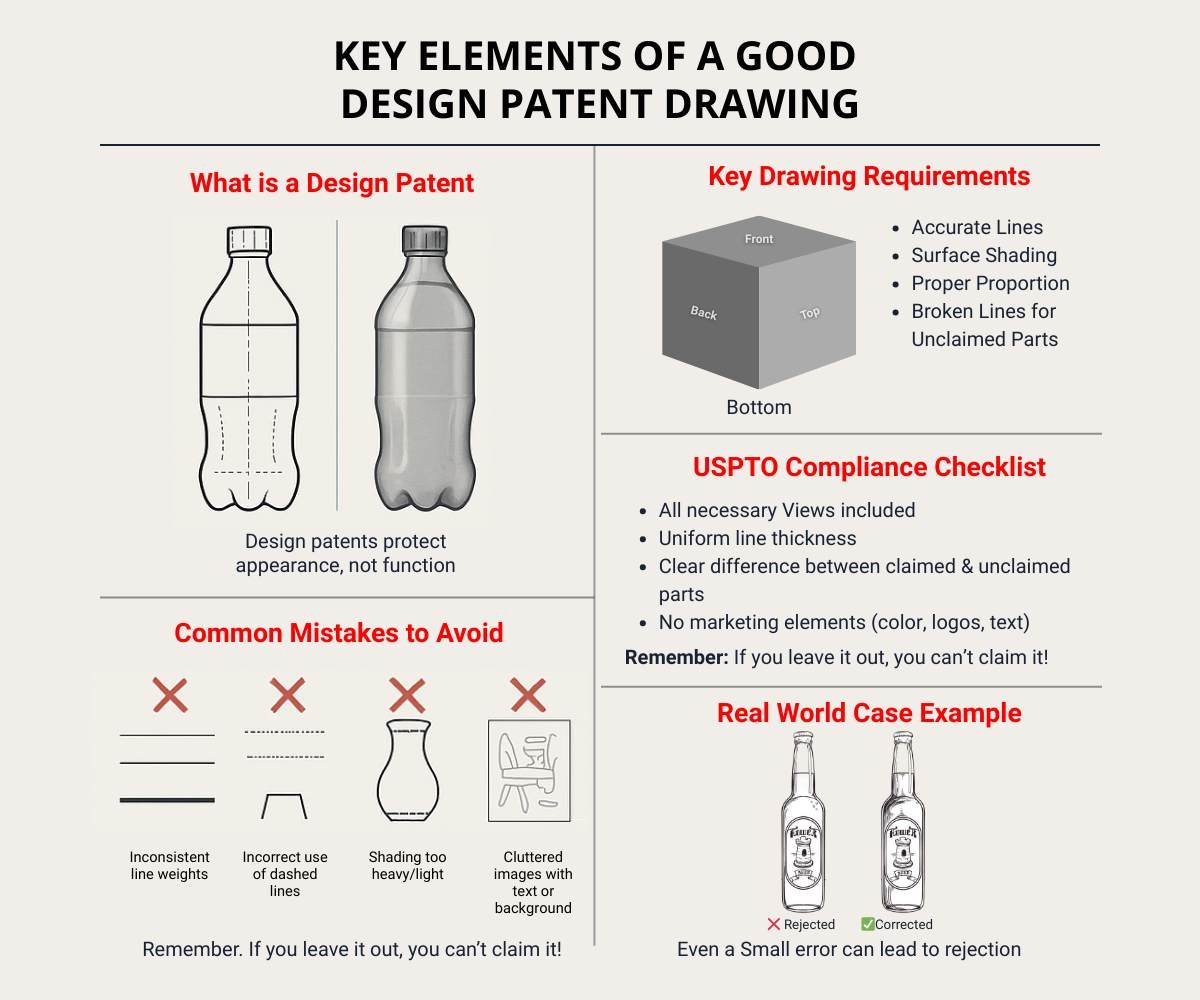Key Elements of a Well-Prepared Design Patent Application

Design Patent Application Services in USA. Here are the key elements of the design patent application service that you need to take care of. The patent expert service is the best agency for Design Patent Application Services in USA.
In today's innovation-driven environment, standing out is more than just what a product accomplishes; it's also about how it appears. This is where Design Patent Application Services in USA come into play. These services help inventors and businesses protect the visual appearance of their innovations, giving them a legal advantage over copycats and competitors. Utility patents safeguard an invention's function, whereas design patents protect only its aesthetic appearance.
Drawings are a significant component of a design patent application. These are more than just sketches; they constitute the foundation of the submission. The US Patent and Trademark Office (USPTO) assesses and approves applications using these images. In this tutorial, we'll explain what constitutes a great design patent drawing, highlight typical mistakes to avoid, and demonstrate how a professional Design Patent Application Service in the USA can help you secure your design rights properly.
Clear, accurate, and USPTO-compliant drawings are required for any successful design patent application. Let's see how to do it correctly.
A design patent drawing visually represents the invention you want to protect. Unlike utility patents, which rely mainly on text, design patent applications in the USA are nearly entirely based on visuals. These drawings must clearly show every detail of the design that the applicant wants to patent. If the graphics are unclear or insufficient, your application may be delayed or rejected entirely.
A complete set of views—including top, bottom, front, rear, left, and right sides—is necessary. If one side is identical to the other (as in a mirror image), a textual statement must accompany the design. For example, if both side views are similar, just one should be submitted, but this must be clearly stated in the application.
Consider the following example: a corporation applied for a design patent for a bottle. Their application was rejected merely because the designs did not match the final product exactly. This demonstrates how even little visual errors can affect the approval process. That's why partnering with a Design Patent Application Service in the USA can make all the difference in ensuring every line and angle is correct.
Drawings are not only beneficial but also required when filing a design patent application in the USA. There is no space for error because the USPTO bases its determination of your claim on what is seen in the drawings. The images must accurately represent your concept. Without these, your application will not be considered for review.
Here is what a complete set of views typically includes:
If a view is missing, a valid justification must be provided. The purpose is to reveal the design from all angles, eliminating ambiguity.
Professional Design Patent Application Services in the USA ensure that your drawings fulfil all essential requirements and have a better probability of being approved the first time.
When submitting a design patent application in the USA, the conventional drawing format is black and white line art. These technical representations must accurately showcase the beautiful features of your design.
Here are the critical formatting rules:
For applicants who are inexperienced with USPTO requirements, this can be a daunting task. That is why many innovators rely on Design Patent Application Services in the USA to handle the technical aspects and avoid frequent blunders that could derail the process.
Even little flaws in a design drawing might generate significant complications. When using a Design Patent Application Service in USA, the following risks are usually avoided:
When it comes to safeguarding your product's appearance and feel, every detail is important. That is why innovators, startups, and existing businesses trust our Design Patent Application Service in the USA. Here's what separates us:
Design Patent Application Services in the USA are crucial for inventors and businesses to protect their innovations' visual appearance, giving them a legal advantage over copycats and competitors. Drawings are a significant component of a design patent application, as they constitute the foundation of the submission. The US Patent and Trademark Office (USPTO) assesses and approves applications using these images. A complete set of views, including top, bottom, front, rear, left, and right sides, is necessary.
Professional Design Patent Application Services in the USA ensure that your drawings fulfill all essential requirements and have a better probability of being approved the first time. The standard format for design patent drawings in the USA is black and white line art, with critical formatting rules such as surface shading, solid lines, broken lines, and photographs.
Common mistakes in design patent drawings include inconsistent line weights, missing or incorrect shading, misuse of solid vs. broken lines, misaligned perspective views, incomplete views, wrong scale, cluttered drawings, and unclear boundaries between claimed and unclaimed parts. To avoid these concerns, it is essential to work with a reputable Design Patent Application Service in the USA.
The patent experts at Design Patent Application Services in the USA provide expertly crafted USPTO-compliant drawings, fast turnaround without compromising quality, and affordable pricing with no hidden fees. By working with a reputable service, you can ensure that your submission is correct, clean, and legal, ensuring your product's appearance and feel are protected.
© 2025 The Patent Expert's All Rights Reserve
Made with ♥ by Website99